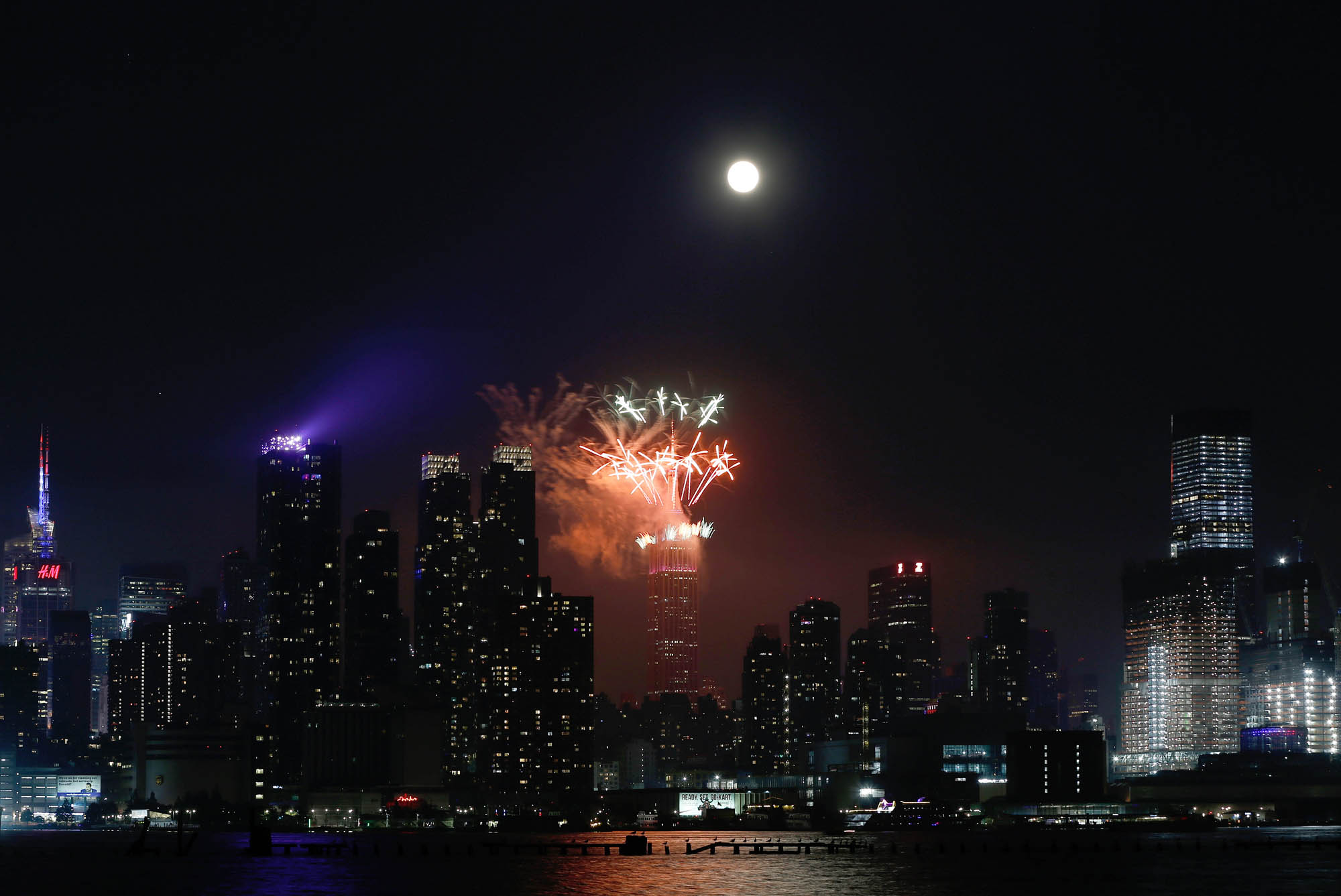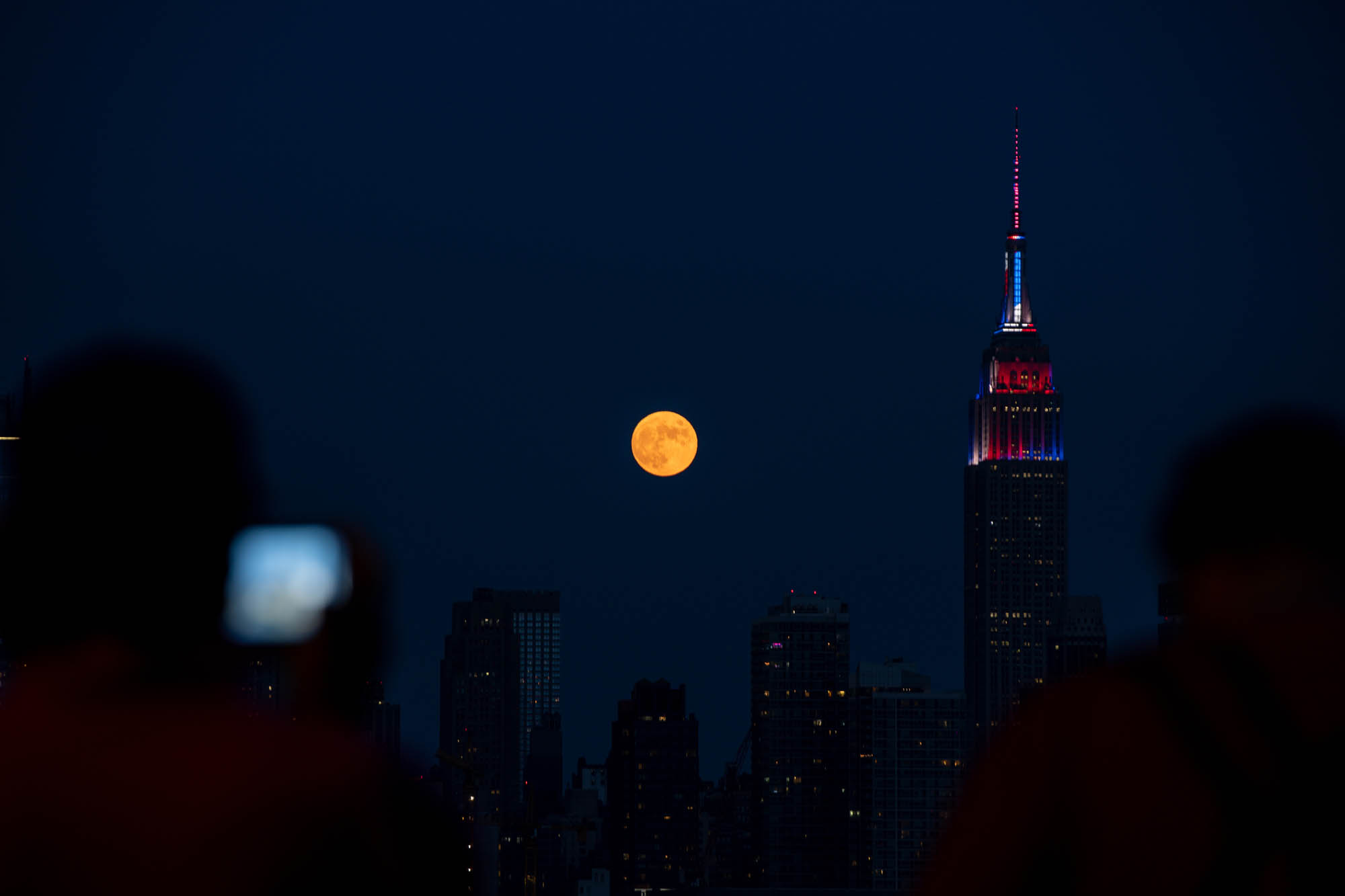July's full 'Buck Moon' wows skywatchers despite lackluster lunar eclipse
Some skywatchers may have seen more than mere fireworks in the night sky during their Fourth of July celebrations on Saturday: the full moon.
Overnight on Saturday and Sunday (July 4 and 5), July's full "Buck Moon" dipped through the outermost edges in a penumbral lunar eclipse. While the lunar eclipse was subtle and difficult to see — one eclipse expert said it would "invisible" — the full moon was still a spectacular sight for skywatchers around the world.
This weekend's eclipse was the third of four penumbral lunar eclipses in lunar eclipses. During a lunar eclipse, Earth comes between the moon and the sun, and the three align exactly (or almost exactly.) Because of this alignment, Earth casts a shadow on the moon's face.
Related: Lunar eclipse 2020 guide: When, where & how to see them
In a total lunar eclipse, the moon is complete in Earth's shadow and can take on a blood-red hue. But during a penumbral lunar eclipse, only the diffuse outer shadow of the Earth, known as the penumbra, falls onto the face of the moon. This means the darkening effect is very slight.
You can see how imperceptible the effect was in July's lunar eclipse in the photos of July's full Buck Moon below.
It’s so nice that everyone decided to celebrate the lunar eclipse and the full moon with fireworks tonight pic.twitter.com/NheWtBGE2eJuly 5, 2020
July full moon and lunar eclipse, also known as the Buck Moon, Thunder Moon or Hay Moon through my telescope last night. pic.twitter.com/Om3hE6FIYSJuly 5, 2020
Penumbral Lunar Eclipse. Still waiting for it to peak pic.twitter.com/VvgJHksNEqJuly 5, 2020
Some highlights from tonight. The moon during the eclipse; 🪐, jupiter annd the moon(in that order) and two extra shots b/c I liked the effect.#LunarEclipse pic.twitter.com/z9nCdgVlPeJuly 5, 2020
An amazing photo of tonight's #LunarEclipse #NoFilter pic.twitter.com/B0cBKuN5MFJuly 5, 2020
All lunar eclipses occur when the moon is full. Interestingly enough, during eclipses (but also during every full and new moon), gravitational forces on Earth are particularly strong because of the sun's influence when it aligns with the moon and our planet. That makes our planet's oceans bulge and causes high tides to be higher and low tides to be lower.
Breaking space news, the latest updates on rocket launches, skywatching events and more!
happy full moon lunar eclipse day i took this through our telescope pic.twitter.com/0gaaCYUSb1July 5, 2020
1229 in the GTA and you can't see a difference....#LunarEclipse #SamsungGalaxy20Ultra #LunchbagLetdown pic.twitter.com/kddxxzjxLOJuly 5, 2020
After this weekend's firework-filled eclipse fun, the next lunar eclipse, which will also be a penumbral eclipse, will be this fall, on Nov. 29-30.
While this weekend's lunar eclipse was nearly imperceptible for many us, it was theoretically visible to people in Southern and Western Europe, most of Africa, most of North America, South America, the Pacific, Atlantic and Indian Ocean regions and Antarctica. Those in the U.S. may have even spotted the eclipse while looking up to enjoy fireworks displays, as the lunar eclipse fell on July 4, which is Independence Day in the country.
The eclipse's many nicknames come from a variety of sources. Penumbral lunar eclipses that occur in July are given the "Thunder Moon" moniker, which comes from the summer storms that happen around the time of July's full moon, according to the Old Farmer’s Almanac.
Indigenous American tribes have also called this moon the "Buck Moon" because this event also usually coincides with the time when male deer begin to grow new, velvety antlers. Some also know it as the "Hay Moon" because it usually comes at a time when farmers are stocking their barns with hay, according to Earthsky.org.
Also, in addition to simply looking up, enjoying the sight and learning more about our rocky satellite, throughout history, many cultures around the world have adopted customs in accordance with lunar eclipses. For example, many have viewed lunar eclipses as times or portents of danger.
Email Chelsea Gohd at cgohd@space.com or follow her on Twitter @chelsea_gohd. Follow us on Twitter @Spacedotcom and on Facebook.

Chelsea “Foxanne” Gohd joined Space.com in 2018 and is now a Senior Writer, writing about everything from climate change to planetary science and human spaceflight in both articles and on-camera in videos. With a degree in Public Health and biological sciences, Chelsea has written and worked for institutions including the American Museum of Natural History, Scientific American, Discover Magazine Blog, Astronomy Magazine and Live Science. When not writing, editing or filming something space-y, Chelsea "Foxanne" Gohd is writing music and performing as Foxanne, even launching a song to space in 2021 with Inspiration4. You can follow her on Twitter @chelsea_gohd and @foxannemusic.


